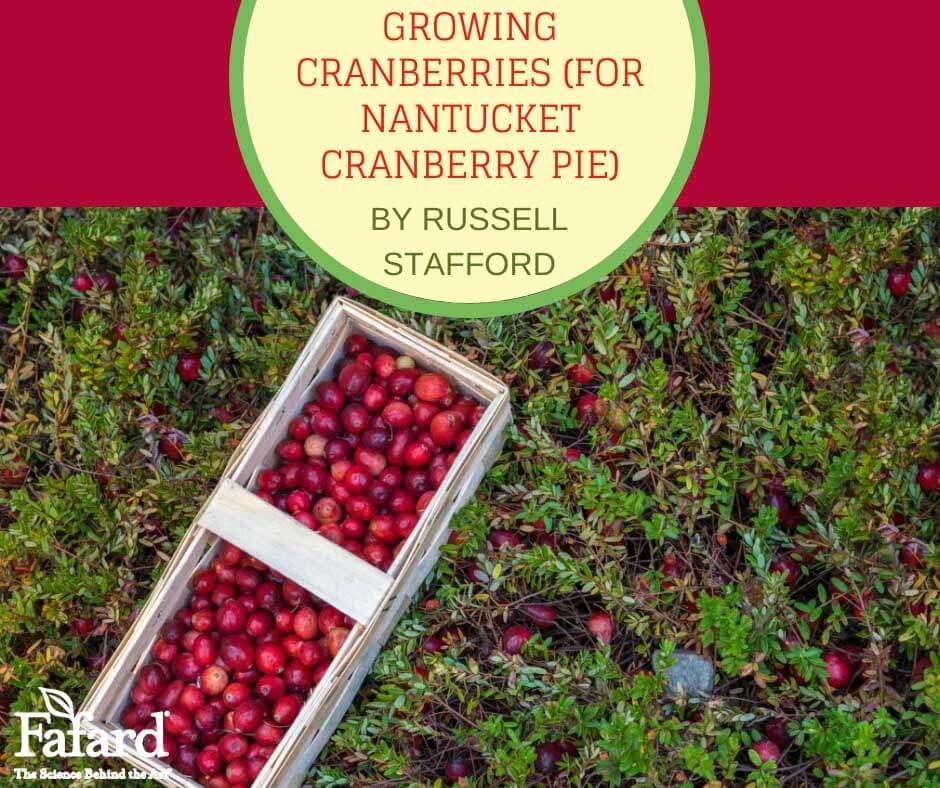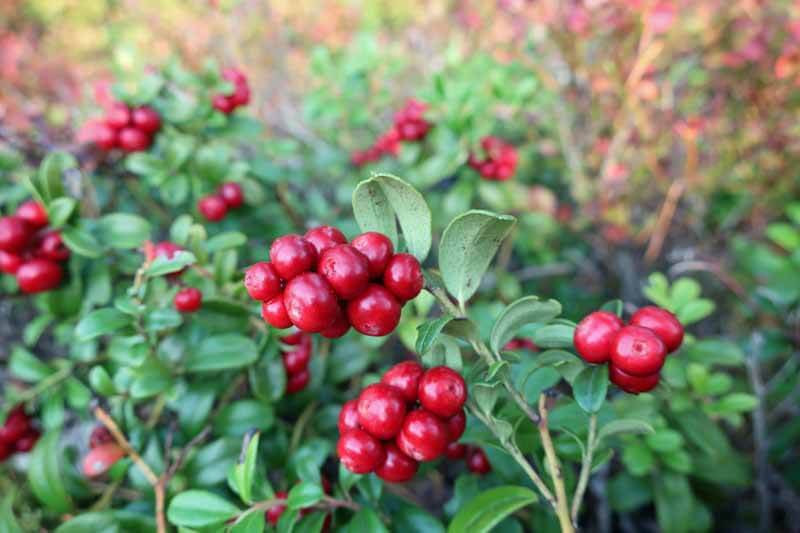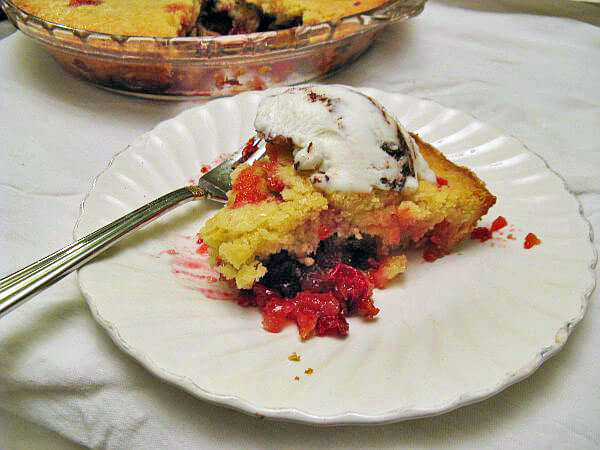
Despite its association with bogs, both in commercial cultivation and in nature, cranberry requires no such sogginess in home gardens, prospering in highly acidic, humus-rich soil that doesn’t dry out. The wiry, carpeting, slender-leaved stems are perfect for covering small slopes, walls, and hollows, and are particularly effective near paths and patios, where the fine-textured foliage, small pinkish early-summer bell-flowers, and showy red berries can receive the adulation (and harvesting) they deserve. Individual plants typically mature at 6- to 8-inches tall and 2- to 4-feet wide.
Cranberry Varieties
Most cultivated cranberry (Vaccinium macrocarpon) varieties come courtesy of the cranberry industry, which has selected them for fruitfulness rather than for ornamental characteristics. A notable exception is ‘Hamilton’, a dwarf cultivar that slowly evolves into a dense, lustrous, foot-wide hummock, adorned in fall with normal-sized berries that loom large amid the tiny, congested leaves. This beauty merits the company of other small, special ornamental plants, the sort that dwell in rock gardens or troughs. It also works well as a solo container plant. Give it a good potting mix amended with peat moss, Fafard Premium Organic Compost, and a dollop of garden soil.
Although most commercial cranberry cultivars (such as ‘Stevens’) offer nothing exceptional in the way of habit and leafage, they are well worth a place in ornamental plantings, functioning as small-scale ground covers and offering a bumper crop of berries as a bonus. Where happy, they produce as much as a quarter-pound of fruit per square foot (expect some losses from insects and fungal disease). Add peat-rich Fafard Premium Organic Compost to the soil to boost soil organic content, if necessary, and elemental sulfur to increase acidity.
Cranberry Relatives

Widely planted in Europe for food and for ornament, lingonberries (
Vaccinium vitis-idaea) have yet to establish a substantial beachhead in North American gardens. Perhaps this is because the most vigorous and easily grown forms occur in northern Eurasia, where they have long been cultivated for their cranberry-like fruits. Most European lingonberries spread relatively rapidly into dense, bushy, 8- to 12-inch-tall clumps. Clusters of pale pink, urn-shaped flowers open in late spring and summer, ripening to tomato-red fruits in late summer and fall. Cultivars abound, including the popular Koralle Group, which flower and fruit copiously on compact, 4- to 6-inch tussocks, and ‘Red Pearl’, whose large, quarter-inch- to half-inch-wide berries are borne on vigorous, wide-spreading plants with upright, 12-inch-tall branches.
Somewhat more adaptable than cranberry, European lingonberry takes readily to acidic, humus-rich, well-drained soil in full to partial sun, where it excels as a refined groundcover. Plant more than one variety for heaviest fruiting. Compact forms, such as the Koralle Group, make good subjects for containers (give them a highly organic potting mix amended with peat and garden soil).
The North American edition of lingonberry (Vaccinium vitis-idaea ssp. minus) inhabits bog margins and mountaintops from the northernmost United States to the Arctic Circle. Smaller, less fruitful, balkier, but more elegant than its European kin, it’s an ideal subject for rock gardens and large troughs in regions where summer temperatures rarely exceed 90 degrees F.
In cooking, lingonberries play the same roles as cranberries, adding color and zest to preserves, sauces, and baked goods. They also freeze well, emerging from the fridge to bring a taste of fall to the midwinter table. Offering year-round beauty in the garden and fall-to-spring flavor in the kitchen, both of these little Vaccinium keep bringing joy long after the holiday cheer has ended.
Recipe: Nantucket Cranberry Pie

A fast, easy pie of New England fame, the Nantucket cranberry pie has many variations, and all are delicious. The bottomless pie is covered with a nutty crumb topping and baked to perfection. Almond extract gives it a needed aromatic boost.
- 2 cups cranberries
- 3/4 cup chopped walnuts
- 3/4 cup sugar
- 1 cup flour
- 1 cup sugar (1/2 cup for tart pie)
- 1 stick melted butter
- 2 lightly beaten eggs
- 1 tsp. almond extract
- 1/4 teaspoon salt (optional)
- 1 pat butter
Directions
Preheat oven to 350 degrees F. Thoroughly grease a pie pan with a butter pat. Place the cranberries at the bottom of the pan then sprinkle with the walnuts and 2/3 cup sugar.
In a bowl, gently stir together the flour, 1 cup of sugar, melted butter, eggs, almond extract and salt in a mixing bowl. Evenly pour the batter over the cranberries and walnuts. Bake the pie for 45 to 50 minutes.
Allow it to slightly cool before cutting. Serve the cooled pie with vanilla ice cream or whipped cream spiked with ginger. Top it with chopped candied ginger, if you like.


